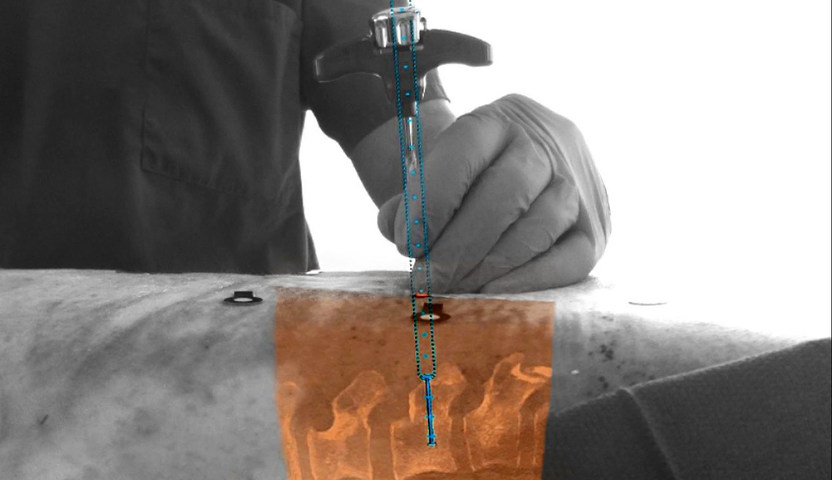Addressing the need for additional visualization options for spinal surgery as it shifts from an open procedure to one utilizing minimally invasive techniques, Philips announced it is actively developing a new surgical-navigation technology that employs augmented reality. Probably still best known as the tech that makes it appear as though Pokémon gremlins have been scattered across public places, augmented reality has the potential to give surgeons a unique view of the the interior of a patient as a procedure takes place.
According to Philips, the new augmented reality technology will draw upon imaging captured by their low-dose X-ray system. High-resolution cameras will image the outside of the patient and combine it with an inside view afforded by the X-ray system. The different visuals will be overlapped to create “a 3D augmented reality view of the patient’s external and internal anatomy.”

(Image credit: Philips)
The first pre-clinical study of the technology found that it increased overall accuracy of pedicle screw placement, an element of spine surgery specifically researched because the relevant field is not plainly visible to the physician when using a minimally invasive approach. The study was published in Spine.
From here, Philips will engage in a joint clinical research program that will lead to the technology’s installation in ten different hybrid ORs.
In a press release, Ronald Tabaksblat, the business leader of image-guided therapy systems at Philips, celebrates the augmented reality technology as a step towards hybrid ORs that will result in transformative approaches to the most complex procedures.
“This unique augmented-reality technology is an example of how we expand our capabilities with innovative solutions in growth areas such as spine, neuro, and trauma surgery,” he says. “By teaming up with clinical innovation leaders, we continue to find ways to convert open surgery to minimally-invasive treatment to reduce post-operative pain and expedite recovery.”




